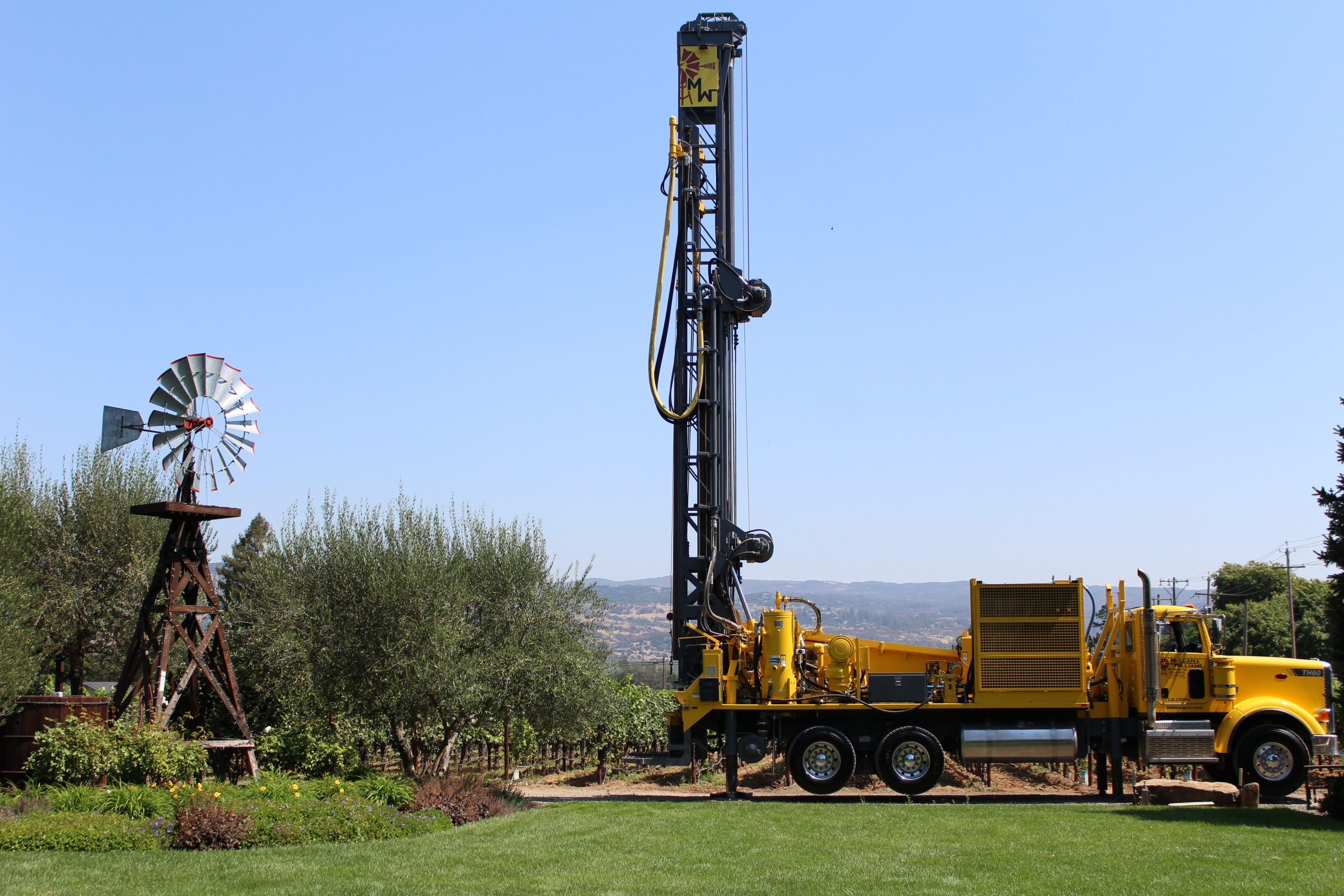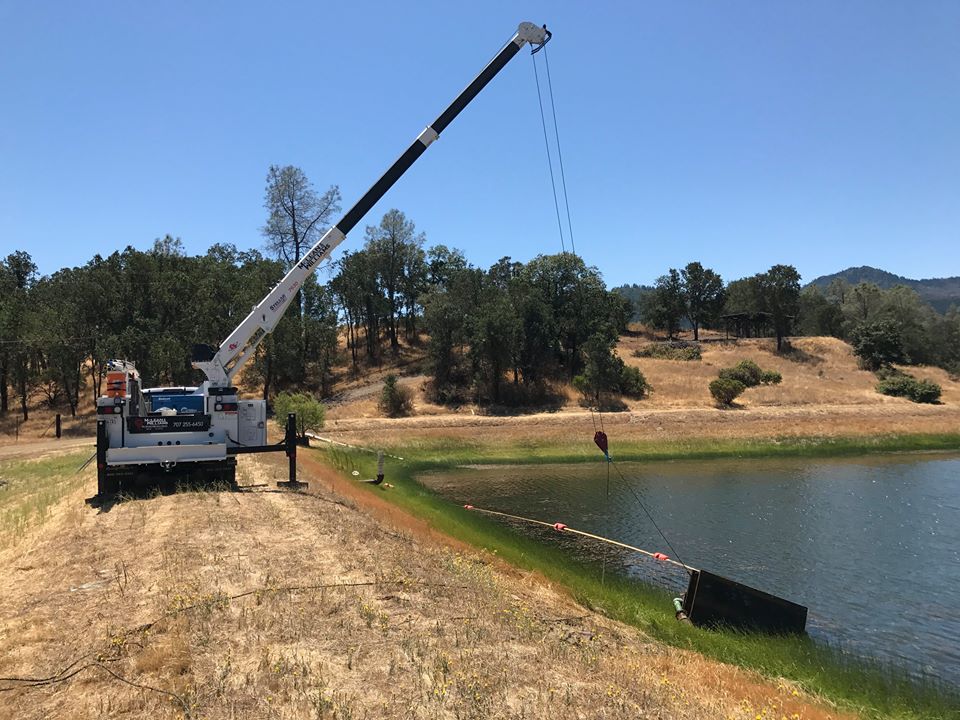
As California faces another year of drought, everyone in the San Francisco Bay Area is once again being urged to conserve water. While those of us whose homes are connected to city water supply networks will be doing our part, it can be easy to take this admonishment for granted—after all, no matter what happens, we can rely on water coming out when we turn on the faucet. However, for many rural homeowners, water conservation is less a civic responsibility than an act of survival. According to Gonzalo Salinas, owner of McLean & Williams, Inc. in Napa, the recent drought conditions are putting a strain on wells throughout the North Bay. “Drought definitely affects wells, especially if they were already low producers,” he affirms. “Due to the lack of rain, irrigation has begun a lot sooner, so the wells are being asked to do more for longer periods of time, even though they haven’t been replenished.”
Worse still, since the current drought is just one of several during the past decade, many wells are exhibiting symptoms of long-term water scarcity. “It’s about a seven- to 10-year cycle from when rain falls to when it replenishes the underground aquifers,” says Mr. Salinas. “We’ve had so many dry years lately that the aquifers are very low, and it’s having a residual effect. Even if it rains a lot during the next few years, many wells will still be low due to the lack of rain over the past decade.”
Well Performance Factors
There are a number of factors that can impact a well’s production, all of which are exacerbated during a drought. “One factor is the type of soil formation,” explains Mr. Salinas. “Some areas have a lot of clay soil, which is very nonporous, so it takes longer for the water to percolate down and recharge the aquifers. Another factor is elevation, as wells up in the hills tend to get recharged faster than those in the valley.”
A third factor Mr. Salinas cites is well depth. “A lot of older wells were deep enough when they were originally drilled, but as more homes have been built over the years, the demand for water has increased. Meanwhile, rainfall has decreased, so the water table has gone down. As a result, many of these older wells are failing to produce as needed because their depth is no longer sufficient to reach the declining aquifers.”
Options for a Declining Well
When your well’s production starts to decline (or stops altogether), it can put you in a tough spot. Typically, you’re limited to the following options:
1. Clean the well casing. This casing is essentially a large PVC pipe with perforations that allow water to enter. Over time, these perforations can get clogged, so the hope is that cleaning them will significantly improve the well’s production. While in some cases this is effective, in others there are bigger issues that require more intensive measures.
2. Drill a new well. If your well’s production continues to be insufficient after cleaning the casing, the next option is simply to drill a new well. You’re probably wondering, “Why not just deepen the original well?” As Mr. Salinas explains, most wells aren’t set up to be redrilled. “Plus, Napa County has some restrictions, so only certain wells under certain conditions can be redrilled. Ninety-five percent of the time, we have to drill a new well.”
To ensure your new well provides sufficient long-term production, your contractor will need to determine the proper depth and location. “Nowadays, we have to drill deeper and tap into sources that we never had to before,” says Mr. Salinas. “However, going deeper doesn’t always give you more water. Sometimes, we can just drill the new well next to the existing one, while in other cases we have to move to a different site in search of a sufficient water supply. In drier areas, we sometimes have to look for veins or streams coming off of those larger aquifers that we can tap into.”
3. Truck in water from offsite. Mr. Salinas says some homeowners in Napa have chosen this route due to the high upfront cost of drilling a new well. But what about tapping into the municipal water supply? According to Mr. Salinas, this option isn’t available for most homeowners. “The city isn’t offering any new services because they’re already topped off. Unless you’re really close, they’re not giving any new water connections to residents.”

When a well ceases to produce, the financial ramifications can be considerable. Photo: McLean & Williams, Inc. ©2021
The Big Pinch
If a well can’t be revived, the property owners are often faced with a significant financial burden. “It’s very costly to drill a well,” affirms Mr. Salinas. “By the time it’s all said and done, you’re looking at between $33,000 and $35,000…and that’s just for the well replacement. Add the pumping system relocation, trenching, and demolition of the old well and the final price tag can run between $40,000 and $60,000.”
While the alternative option of trucking in water doesn’t carry that kind of upfront cost, it’s by no means cheap. “A 2,000-gallon load of water costs about $200,” says Mr. Salinas. “In the average household, each person requires about 100 gallons per day, give or take. If you have four people living in your home, that can easily amount to 400 gallons per day. You can do your best to minimize usage, but you’ll likely need a couple of loads every month just to get by.”
The cost of access to water isn’t the only financial ramification of a declining well—there’s also the impact on property value. “If your property doesn’t have water, it drastically changes the property value,” says Mr. Salinas. “What’s more, it can make the property harder to sell in the first place.”
Preventing Well Failure
While the outlook can be murky for a well that’s already in decline, if your well is still producing sufficiently, you can take measures to maximize its lifespan and performance. Mr. Salinas says the two most important aspects are conservation and monitoring. “You need to keep an eye on your well and plumbing system. Remember that every little leak adds up. Even something as minor as a running toilet can potentially waste 1,000 gallons per day.
“A good water meter is a must so you can keep track of your usage,” he continues. “For example, if your average weekly usage is 10,000 gallons and one week you notice it’s up to 14,000, that’s a sign that something may be wrong.” Mr. Salinas also recommends having your well management company help you collect data about your well. “This will give you a heads up on things so you can make adjustments to your usage as needed.”
Do you need help repairing, replacing, servicing or monitoring a well on your property? Find a Diamond Certified water well and pump company in your area.
